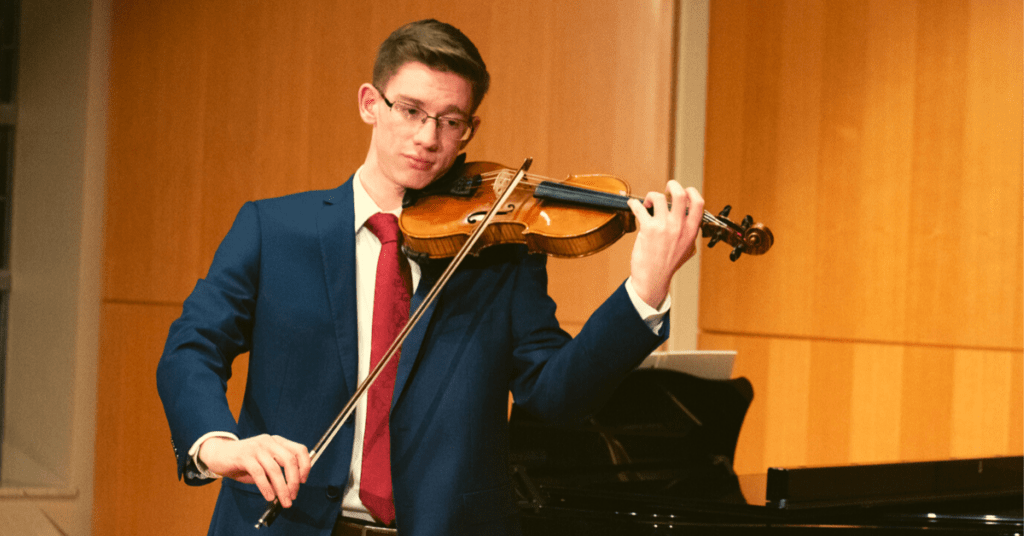Peter Holloway Senior Violin Recital Highlights
As a Music Major with concentrations in String Pedagogy and Church Music, Peter Holloway recently performed his senior violin recital. Holloway practiced and refined his repertoire for many months under the direction of Lewis Rosove. Upon graduation with his music degree, Holloway plans to attend Maranatha Baptist Seminary this fall. He says, “My long term goal is ministry with music in whatever capacity the Lord has for me.” Three of Holloway’s audience-pleasers that night include Sonata No. 3, Mov. I; A New Satiesfaction, and Concerto in C Major, Op. 48. Mov. I.
Brahms: Sonata No. 3, Mov. I
First, Holloway’s performance of the first movement of Brahms’ Sonata No. 3 was particularly noteworthy. He says of the piece, “I love playing Brahms because of his capricious, emotionally charged works, and have enjoyed exploring the many emotions woven into this composition. The entire sonata demonstrates rapid mood changes from vicious to serene to humorous to tender with barely any warning. Brahms loves to play with the rhythms in his music until the downbeat becomes lost in the shuffle of syncopation, accents, and two against three rhythms between the violin and piano.”
Koncz: A New Satiesfaction
Holloway also played “A New Satiesfaction,” a difficult piece written by Stephan Koncz. “My younger brother pointed out this particular piece of music to me last year, and I laughed when he said I should play it for my recital,” says Holloway. “I eventually decided to give it a shot, however, and it has been an absolute blast to learn. The composer takes the easily recognizable theme from Satie’s Gymnopedie and works it into a fun arrangement that incorporates a surprise element in the build-up to the climax.”
Kabalevsky: Concerto in C Major, Op. 48. Mov. I
Finally, the first movement of Kabalesvsky’s Concerto in C Major, Op 48. added to Holloway’s repertoire. “Kabalevsky wrote his Concerto in C Major in 1948 to aid the development of young professional musicians in Soviet Russia,” explained Holloway. “For this reason, its musical form is very straightforward, and key areas are fairly simple. To contrast the simple form, Kabalevsky uses a fast-paced, rhythmic, chromatic approach in this first movement to give the piece an exuberant feeling. From the heavily accented first note to the frantic arpeggiated finish, there seems to barely be a moment to catch one’s breath.”


